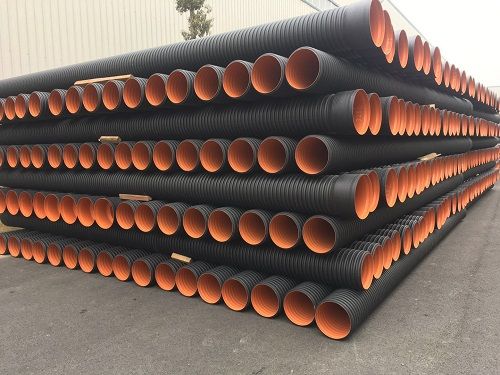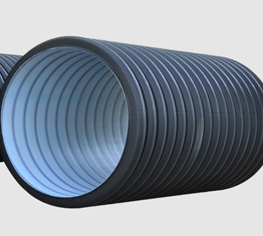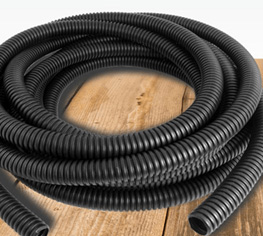Sanitary Pipes
Corrugated Pipes

Corrugated pipes are pipes that have a series of ridges and grooves running parallel to their length. The ridges and grooves provide strength and flexibility, making corrugated pipes ideal for a variety of applications. Corrugated pipes are available in longer lengths, the corrugated design increases the structural integrity of the pipe, allowing it to withstand external pressures, loads, and impacts better than smooth-walled pipes.
- We stock injection molded fittings for pipe diameters 6”, 8”, 10”, and 12”. Injection Molded Fittings Specifications
- Other soil-tight and water-tight dual wall fittings are available upon request. An entire list of available fittings can be found in the Fittings Manual
Corrugated pipe is a common sewage and drainage pipe in our life. It is processed and produced with high-density polyethylene as raw material. With its unique structure, it has the characteristics of light weight, high pressure resistance, good toughness, fast construction and long service life. Compared with other pipes, the utility model has the advantages of lower cost, simple connection mode and wide application range.
Double wall pipe is stocked in 20′ lengths in the following diameters: 4″, 6″, 8″, 10″, 12″, 15″, 18″, 24″, 30″, and 36″. Additional sizes and lengths are available upon request.


- Resistant to Abrasion
- Ease of installation
- Good connectivity with manholes & chambers
- corrosion resistance
- durability (50+ years life)
- joints are water tight
- minimize excavation cost
- Hygienic & Safe, Light in weight and are economical.
- Flexible but strong
- No root intrusion
- 100% watertight joints
- Rodent deterrent on request
- best earth load bearing strength
Features & Benefits of Corrugated pipes:
corrugated pipe is a common sewage and drainage pipe in our life. It is processed and produced with high-density polyethylene as raw material. With its unique structure, it has the characteristics of light weight, high pressure resistance, good toughness, fast construction and long service life. Compared with other pipes, the utility model has the advantages of lower cost, simple connection mode and wide application range.

Corrugated pipes are pipes that have a series of ridges and grooves running parallel to their length. The ridges and grooves provide strength and flexibility, making corrugated pipes ideal for a variety of applications.
Corrugated pipes are made from a variety of materials, including steel, aluminum, plastic, and fiberglass. The material used will depend on the specific application. For example, steel corrugated pipes are often used in sewer and drainage applications, while aluminum corrugated pipes are often used in electrical conduit applications.
Corrugated pipes are available in a variety of sizes and shapes. The size of the pipe will depend on the amount of fluid or material that will be flowing through it. The shape of the pipe will depend on the specific application. For example, round corrugated pipes are often used in sewer and drainage applications, while oval corrugated pipes are often used in electrical conduit applications.
Corrugated pipes are a versatile and durable material that can be used in a variety of applications. They are made from a high-quality material that is resistant to corrosion, damage, and extreme temperatures. Corrugated pipes are also easy to install and maintain, making them a cost-effective option for many homeowners and businesses.
Here are some of the common uses of corrugated pipes:
- Sewer and drainage: Corrugated pipes are often used in sewer and drainage applications because they are strong, flexible, and can withstand high pressures.
- Electrical conduit: Corrugated pipes are also used in electrical conduit applications because they are resistant to corrosion and can withstand high voltages.
- Irrigation: Corrugated pipes can also be used in irrigation systems, as they are resistant to corrosion and can withstand high pressures.
- Stormwater management: Corrugated pipes can also be used in stormwater management systems, as they are able to carry large volumes of water.






